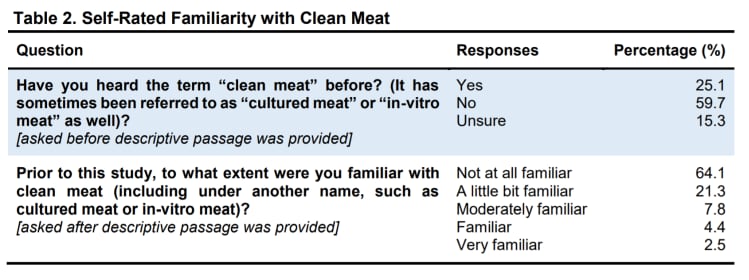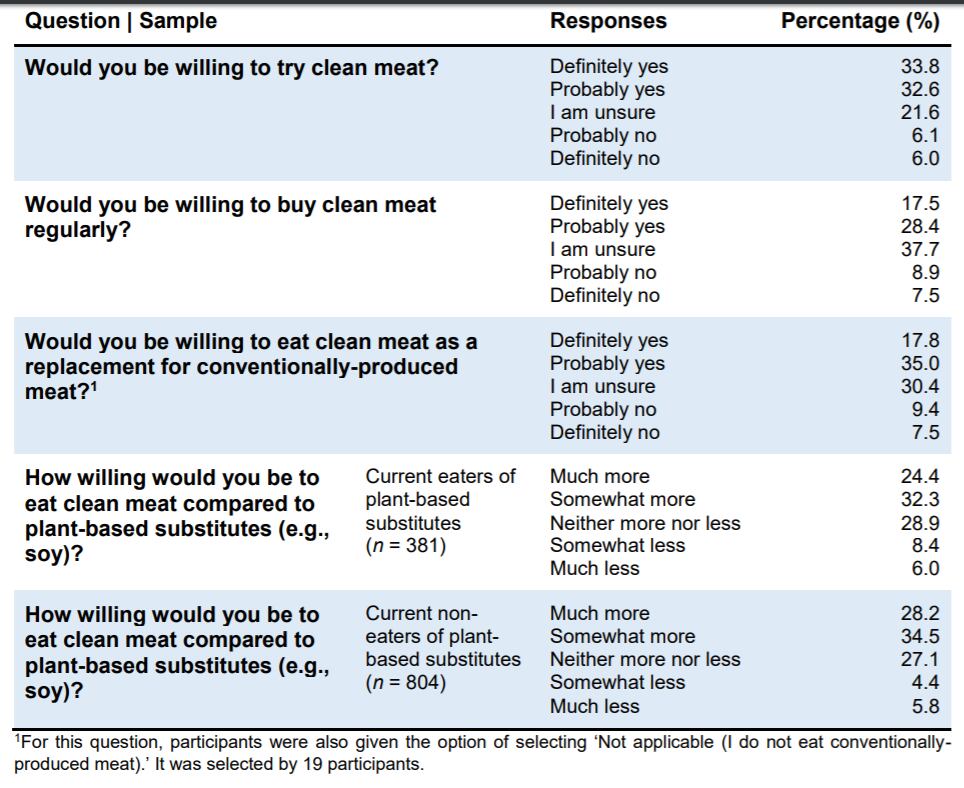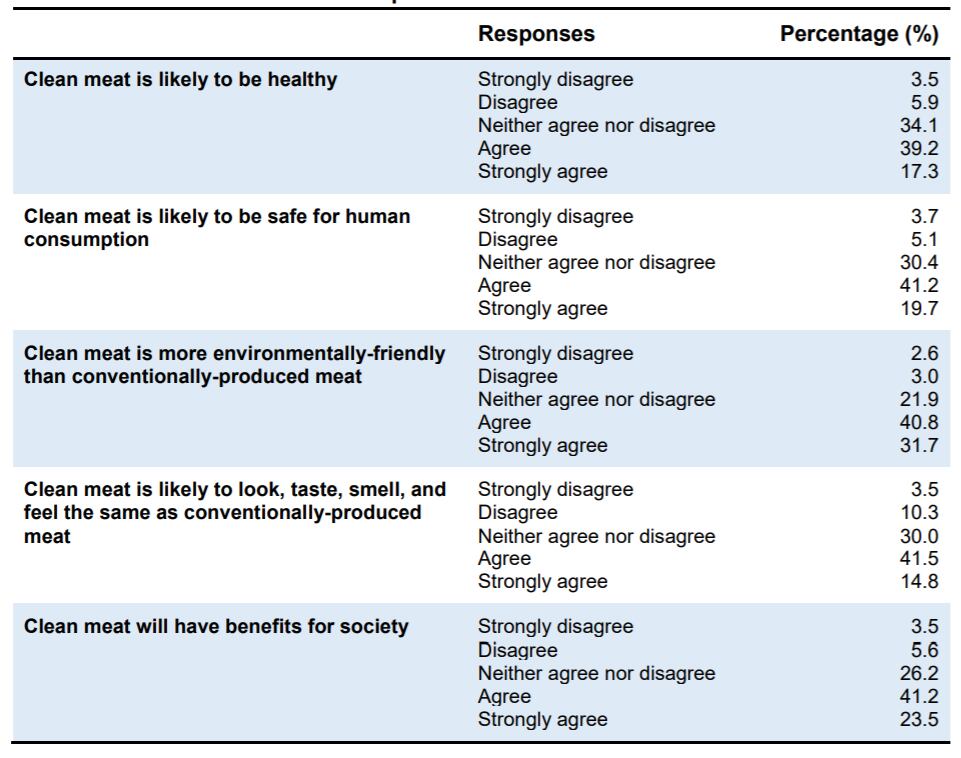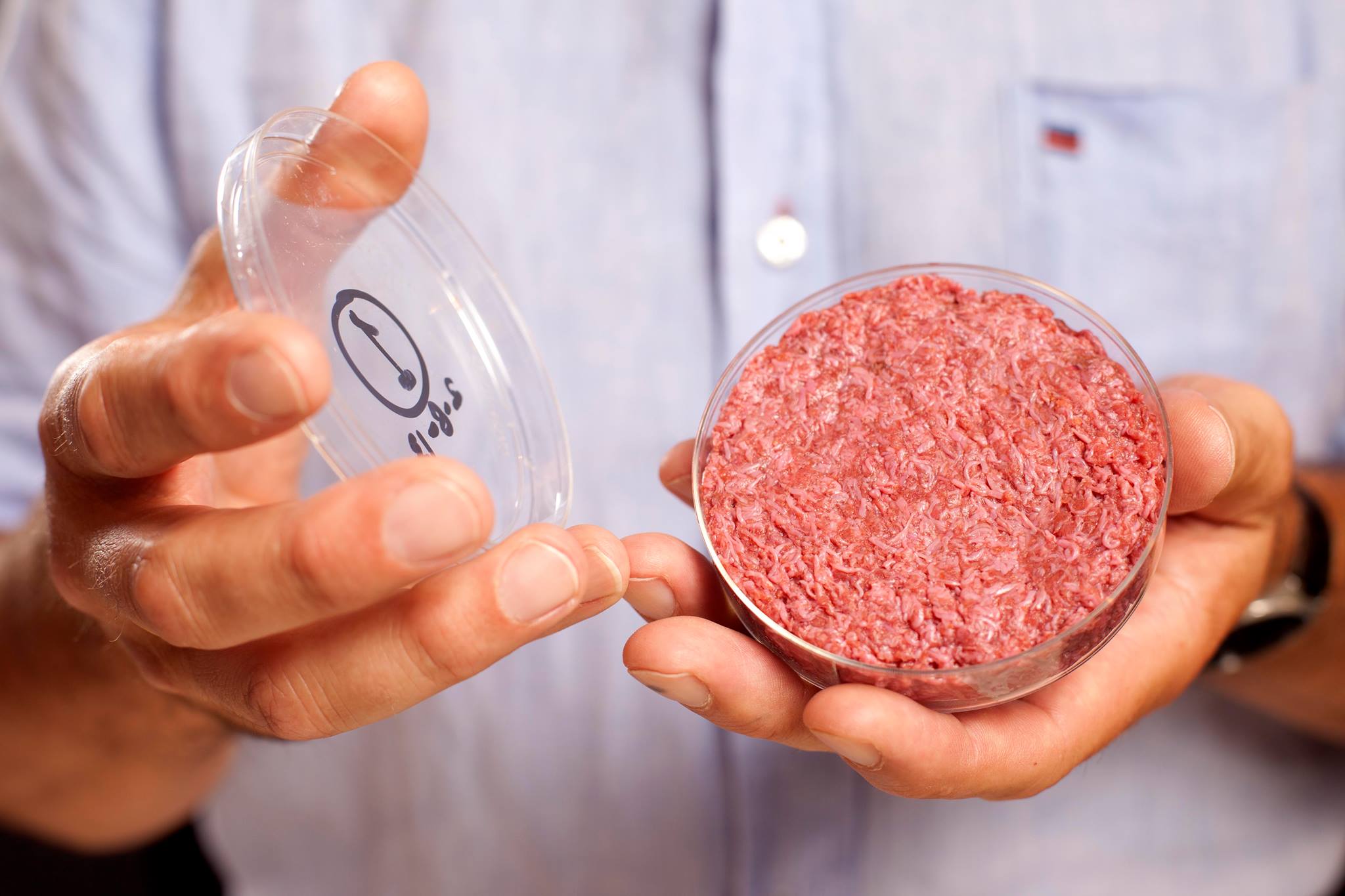While early research on consumers’ reactions to clean meat has been mixed, it has generally focused on understanding ‘baseline’ attitudes — “asking people who know little about it whether they’d be willing to eat it,” said Faunalytics - a nonprofit research organization dedicated to animal rights behind a new nationally representative survey of 1,185 US adults conducted in January/February 2018.
“This study put clean meat in context for people, by describing its positive benefits and the downsides of conventional meat production. With that positive context, we saw a much more favorable level of acceptance," explained Faunalytics, which had support from the Good Food Institute and the Animal Advocacy Research Fund.
66% of Americans are willing to try clean meat
Survey respondents were all read this intro text: “Clean meat (also called cultured meat or in-vitro meat) is real meat which is grown from animal cells without the need to raise animals. It should not be confused with meat substitutes such as soy, since it is real animal meat: it has the same taste, texture, and the same or better nutritional content as conventionally-produced meat.”
They were then divided into four groups, each of which were given a different passage to read to determine what kinds of messaging might be most effective at encouraging consumers to accept clean meat.
#1 - Clean meat products are made using a natural process very similar to the way yogurt and beer are fermented. This is a method which has been used in food manufacturing for thousands of years. The development of clean meat resembles how muscles naturally grow within an animal very closely. In fact, this process of cell growth is present in all natural life. Clean meat has many benefits for human health, animals, and the environment. But best of all, it’s all-natural!
#2 - Production of conventional meat today is far from natural. Animals are fed antibiotics and hormones so that they grow much faster and larger than they would in nature. Unsanitary farming conditions increase the risk of contamination from feces, as well as viruses and bacteria. The meat also contains additives, artificial coloring, and preservatives, and is often treated with radiation. Clean meat avoids all of those issues. It has many benefits for human health, animals, and the environment. But best of all, it’s just meat!
#3 - You might think that clean meat is unnatural, but naturalness does not necessarily mean goodness. Indeed, most modern food (including rice, tomatoes, milk, and – yes – meat) has been manipulated by people to make it suit our needs, and it is tastier and more nutritious as a result. On the other hand, some plants (like many types of poisonous mushroom) are completely natural but can easily kill you. Clean meat has many benefits for human health, animals, and the environment. It’s a perfect example of humans improving on nature!
#4 - [Control] There are many reasons to eat clean meat: It requires much less water to produce and will cause far less climate change than conventionally-produced meat; it doesn’t require animals to suffer or die; it can feed far more people from the same amount of land; and it has the same or better nutritional content as conventionally-produced meat. In sum, clean meat has many benefits for human health, animals, and the environment. But best of all, it’s delicious real meat!
The results: 66% willing to try clean meat; 25% have heard of it
Asked, "Have you heard the term 'clean meat' before? (It has sometimes been referred to as 'cultured meat' or 'in-vitro meat' as well)?" 25% of respondents answered 'Yes.'
Overall, 66% of respondents were willing to try clean meat, 53% were willing to eat clean meat as a replacement for conventional meat, 46% were willing to buy it regularly, and 40% were willing to pay a premium for clean meat – figures higher than those in previous studies,* in part because the polling directly followed positive messaging about clean meat, acknowledged Faunalytics.
“Both the description and the messages described clean meat in positive terms, indicating its aesthetic and nutritional parallels with conventional meat and its benefits for the environment, health, and animals. They also, of course, used the term ‘clean meat’ rather than an alternative.
“Participants may also have been subject to social desirability bias—answering as they believe others would want them to—for questions about a product with such profound ethical and environmental implications.”
Is clean meat ‘natural’? And does it matter?
As to the impact of the four statements above on consumer perceptions, the most effective strategy appeared to be raising awareness of some of the less consumer-friendly aspects of slaughtering animals on an industrial scale to make the argument that there is nothing ‘natural’ about conventional meat production (message #2), said Faunalytics.
“Consumers who read this message were also willing to pay more for clean meat than those who didn’t.
“That being said, such an approach would represent a fairly aggressive stance towards conventional meat producers, which may not be an optimal strategy for advancing clean meat. Several conventional meat producers are already backing clean meat technology, so encouraging others to do so as well may be a better strategy than fighting them with legal challenges or marketing.”
Attempting to argue that clean meat is natural or that naturalness is unimportant (messages #2 and #3), however, was not effective: “Given that these messages were developed by subject matter experts with multiple rounds of feedback, these arguments may be difficult or impossible to use effectively.
“We suggest that future research carefully consider whether trying to directly overcome perceptions of unnaturalness is the most effective option before pursuing it further—a few of this study’s effects suggest there may even be potential for it to backfire.”
Will consumers pay more for clean meat? For beef, 14% of respondents were willing to pay a premium of 25%+, while 25% were willing to pay a premium up to 25%. For chicken, 22% of respondents were willing to pay premiums of 25% or more, and a similar number for fish. 19% were willing to pay a premium up to 25% for each.
Consumers who read message #2 (highlighting some of the negative aspects of conventional meat production) were more willing to pay more for clean meat (47% versus 38% of those who read the control message #4).
The take home
More detailed testing of specific messaging around clean meat is needed, concluded the authors, but obsessing over the ‘naturalness’ or otherwise of clean meat or its conventional counterpart may be a less effective strategy than simply focusing on positive messaging about taste and nutrition, animal welfare, and the environment (as per the control group #4).
“The high rates of clean meat acceptance observed in this study at the overall level and in the control condition suggest another potential strategy: that providing potential consumers with positive educational messaging about the benefits and characteristics of clean meat may be a good way to reduce the emphasis on naturalness before it becomes the focus of the conversation.”
Read the full report HERE.
*A 2017 study surveying potential consumers in 2016 found that 65% of Americans were willing to try clean meat, but only 32% would be willing to replace conventional meat with clean meat and 33% would be willing to eat clean meat regularly (Wilks & Phillips, 2017).




“Even in this very short survey, accurately describing clean meat and talking about its benefits convinced consumers that it’s a product they want to consume – in a real-world scenario, these numbers should be even better.”
Bruce Friedrich, executive director and co-founder, The Good Food Institute
Who’s who in the global clean meat market?
While no cultured meat products are on the market yet, a handful of players from Mosa Meat in the Netherlands, Future Meat Technologies and SuperMeat in Israel, Memphis Meats, Finless Foods, Wild Type, BlueNalu, Mission Barns, New Age Meats and Just Inc in the US, and Integriculture in Japan are looking to introduce them over the next five years.


